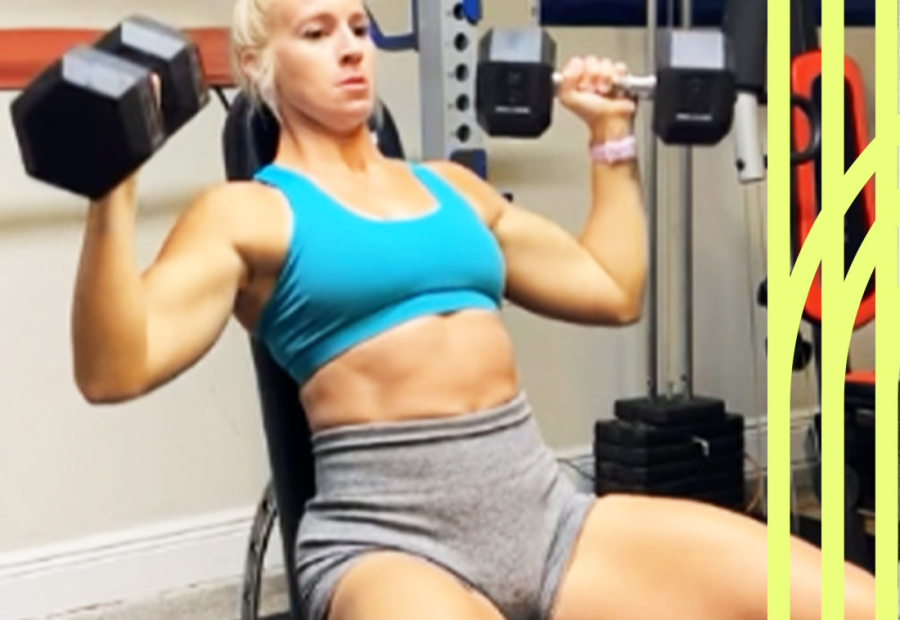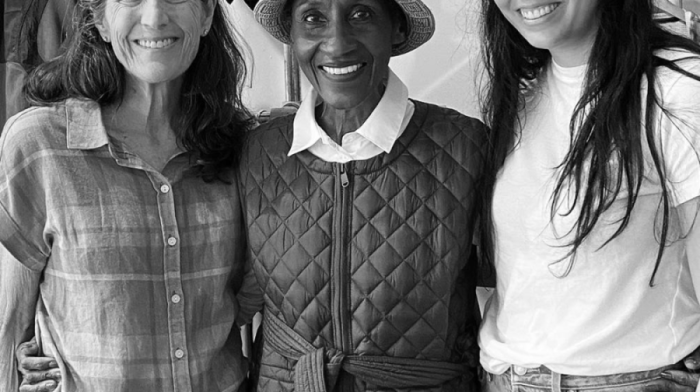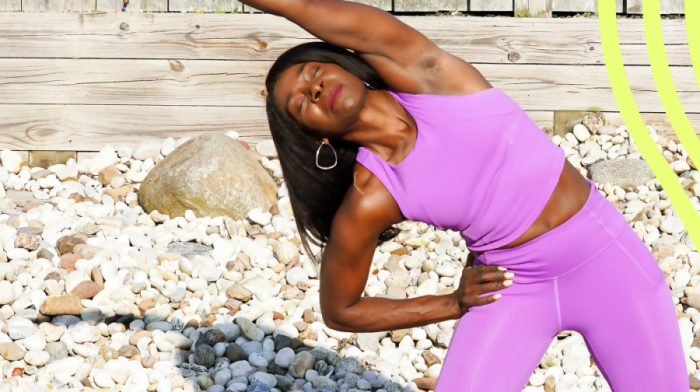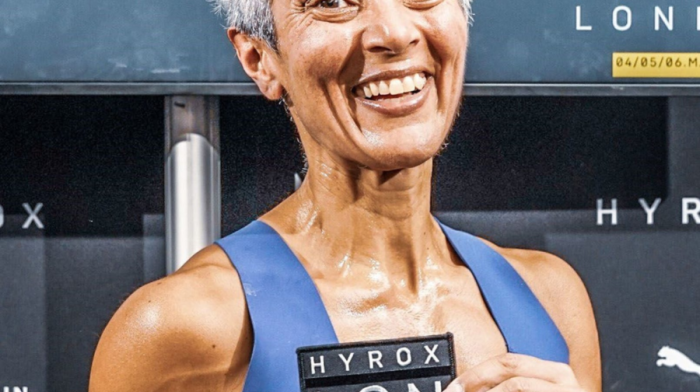My relationship with exercise and food wasn’t healthy for most of my younger years. In high school, I struggled with my body image and an eating disorder, trying to achieve what the media portrayed as the “ideal” body type. I under-ate and overworked my body, running for at least six miles a day, every day. I was so brainwashed from what society deemed as beautiful.
But once I became pregnant with my first kid, a son, at 24, I knew I had to make changes and eat properly to grow a healthy baby. As such, I gained a lot of weight while I was pregnant. But because I knew I was creating life, I was able to block out my triggering eating disorder thoughts. I kept this mentality through my second and third pregnancies at 27 and 30 with my two daughters.
It was the time in between pregnancies, and while my kids were growing up, when I still struggled with eating. I would get caught up in the "lose the baby weight" mindset, and I felt like the size of my body was tied to my worth. I knew deep down that I was in an unhealthy spot mentally, but I didn’t make a change until one night when my older daughter noticed I wasn’t eating dinner, and asked why. I knew I had to model better behavior for my kids.
In November 2021, I started researching strength training in an effort to get strong and be the example I wanted to be for my children.
When I was 31, I started learning about different workouts other than running. Through my research, I started to understand that in order to become stronger from lifting weights, you needed to fuel. I thought that lifting could be a way to actually encourage myself to eat, and ultimately overcome my struggles with my eating disorder. Even though I still feared the weight gain that might come with lifting and putting on muscle, I that if I made the switch, I’d become stronger.
I didn’t know anything about strength training, like what exercises to do or how muscle growth worked. But I was determined to become strong to form a better relationship with food—even if it was hard and scary.
So, I bought some dumbbells and made a home gym in my garage. Then, I started following YouTube and Instagram strength training videos. I also started watching videos about anatomy and reading the National Academy of Sports Medicine's personal training book (not because I wanted to get certified, but for my own personal knowledge). My first year of working out was all trial and error—I was figuring out how strength training worked and what kind of workouts best benefited my body, but I started feeling stronger and enjoying my workouts.
Simultaneously, my relationship with food became so much better. I started focusing on eating to fuel myself for workouts instead of using workouts as permission to eat. I threw out my scale and focused on one task at a time, like eating a full, nutritious breakfast for a week straight. From there, I’d increase the amount I ate throughout the day and fueling myself became easier even though my body was changing. I also learned that protein plays a huge part in stimulating muscle growth, so I began eating one gram of protein per pound of body weight every day, which is still a goal I have now.
By eating more, I realized I had more energy, and my mood improved too. It wasn’t just that I was becoming stronger—I was feeling better all around. Changing my mindset to prioritizing becoming strong over skinny was an incredible feeling. Nothing feels better than being strong.
I work out five days a week using my own workout plan.
On Mondays, I do shoulders and abs, with exercises like shoulder presses, lateral raises, rear delt rows, and crunch variations. On Tuesdays, I train my lower body, doing moves like deadlifts, barbell squats, Bulgarian split squats, and goblet squats. Then, on Wednesdays, I do back and biceps exercises like curl variations, lat pull-downs, and barbell rows.
On Thursdays, I do chest and tricep movements like bench presses, chest flies, tricep push downs, and tricep skull crushers. Lastly, on Fridays, I do another lower-body day with hip thrusts, RDLs, split lunges, and dumbbell hamstring curls. In terms of volume, I usually do six to 12 reps and three sets of each exercise.
One goal I’ve been proud to hit was deadlifting 300 pounds—that is my biggest accomplishment in the gym so far, and I’m now working towards lifting even more.
After lifting, I run one mile or do 10 to 15 minutes of sprints on Mondays, Wednesdays, and Thursdays. I also stay active with my family, usually walking, biking, or scootering almost every day after my kids finish school for about 30 minutes. Saturday and Sunday are active rest days, so I’ll bike, swim in the pool, or go to the beach with my family.
These three things were key to making my strength transformation happen.
1. I stopped believing that health is determined by the scale.
I spent so many years using the scale as a way to determine progress on my fitness journey, but there’s so many other variables that represent success. Progress can look like lifting heavier weight after a few months, seeing muscle definition in your body, or feeling more energetic after a workout.
2. I prioritize form over lifting heavy.
When I started watching videos of other people lifting heavy weights, I thought I also needed to start lifting as heavy as I could right off the bat. But because my body couldn’t handle it, my form was awful. Form is far more important than how much you can lift because if you lift too heavily, you’re putting yourself at a potential risk for injury.
3. I consider food a source of energy and understand the importance of fueling my body.
Even if you don’t work out, you need to eat to fuel your body for daily life. I used to think working out was a way to “earn” food and punish myself for eating. But now I know that food is a source of energy that will help me become stronger and healthier.





















Comments (0)